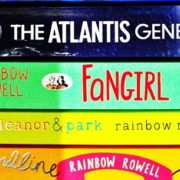How to Pitch Book Cover Art and Titles to a Publisher
When you pitch book cover art and titles to a publisher, diplomacy will win you more concessions than obstinance.
During the days when I was writing romance books for legacy publishers, I quickly discovered that actual, in-the-trenches marketing experience was no guarantee that a publisher would accept my ideas for great book covers, titles, advertising copy, or the inside teaser.
For those of you who have no professional marketing credentials, I still recommend that you get as involved in the book cover art / packaging decisions as your publisher will allow. Just be sure not to alienate the entire editorial team because you have an opinion. Newbie-hood is a time for baby steps. When you’re writing novels that sell well, you can call more shots.
As a new author, you must keep in mind that a publisher approaches book cover art and titles differently than you do. The writer, who has slaved over her prose for months (maybe years), yearns for the best book covers. In her mind, cover art should accurately reflect her characters and setting and make her proud before her family and friends.
A publisher views your mid-list novel as one of dozens that need to be cranked off the presses each month and shipped to distributors by a certain date. These books need to be cosmetically appealing, yes, but they also need to be recognizable to the genre reader. In the opinion of your publisher, accurate depictions of landscape, architecture, and hair color aren’t as critical to designing great book covers as satisfying certain packaging formulas that (presumably) make readers buy.
Reaping a profit from your novel is your publisher's goal. Staying under budget is your publisher's ideal. Thus, to argue for any book cover concession that is going to cost your publisher money -- like demanding that the cover art be corrected because your hero isn't supposed to have a mustache -- is unlikely to result in a win. (Trust me. I know.)
Learn to pick your battles. With a bazillion unpublished authors waiting in the wings, all hungering to write in your place, writing good books with fresh plots needs to be your #1 priority. The last thing you want to do is alienate your editor over some petty sticking point during cover art production. That's why I agreed to cooperate with the artist who was painting my historical romance novel covers. I wrote a mustache into Texas Wildcat for its hero, Zack Rawlins. (Ironically, the romance novel art for Texas Wildcat is my favorite in my Texas Trilogy.)
Everyone at your publishing house will want you to concentrate on writing novels that sell and let them worry about packaging. Nevertheless, you're still the best resource regarding your story. If your original title for your book cover is rejected, your editor may invite you to supply alternatives. Be grateful for these concessions, and act like a team player. Recognize that you aren’t the boss in this scenario. You’re merely the consultant.
According to rumor, only 10% of the titles that authors propose for romance novel covers will ever get approved by your publisher. My record is 2 out of 5 for my western romance books, so I guess I'm doing something right.
For my first historical romance novel, which was the story of Fancy Holleday’s flight from a Texas lawman, I supplied Bantam with the working title, Flight of Fancy. I never liked it. Bantam rejected my working title and decided upon Texas Outlaw, because the marketing department had determined, through exhaustive sales analysis, that stories about Texas were popular among Romance readers. And that was fine by me!
However, in the months that followed, I glimpsed the emergence of a disappointing pattern. Despite marketing conversations that had transpired during the contractual process, my publisher didn't consult with me over my romance novel cover (art or copy), nor was I consulted about the promotional copy for Texas Outlaw. While I was writing the proposal for the next historical romance book that I wanted to sell, I determined to have a voice in designing my romance covers. I enlisted the aid of my literary agent to remind my editor of my keen desire to participate in packaging discussions.
This strategy paid off: I was consulted about book cover titles for the rest of my historical romance novels. Bantam made the word Texas non-negotiable, so I suggested the titles Texas Sweetheart (which became Texas Lover) and Texas Wildcat (which stuck). Scoundrel for Hire (published by Avon) was another win, but I lost the battle over Always Her Hero.
On the bright side, Avon let me try my hand at writing the blurbs for the back of the historical romance novels that I wrote for them. I was invited to submit marketing copy for Scoundrel for Hire and Always Her Hero (two more western romance books). Capsulizing 450 pages in 150 words was excruciating: each of those blurbs took me three days to write. Writing the advertising copy for romance covers is tough. I don't recommend that you volunteer for such an undertaking, even if you are a glutton for punishment (like me!) Let the advertising professionals write the advertising copy, while you concentrate on the important stuff: writing novels that sell. That way, you'll get the best book covers that your market-savvy publishing team can design.
However, I do encourage you to gently, but persistently, request the right to provide feedback about the book cover's blurb before that back copy is finalized. Permission to approve the back cover copy is a privilege. Not all publishers will grant you this perk. If you’re lucky enough to be consulted at this critical juncture in your fledgling career, be sure that you position yourself as the poster-child for professional diplomacy: critique the copy writer’s accuracy, not her style.
For instance, if your book takes place in Colorado, and the blurb mentions California, raise a red flag for your editor. But don't waste your editor's time because you think "woolies" is more clever than "sheep," "saffron" is more descriptive than "yellow," or you can't abide sentence fragments. (Note to the Grammar Crusaders: Advertising copy is full of sentence fragments. Accept this necessary evil and move on.)
Getting your publisher to hear your book cover ideas when money’s at stake isn’t easy. You have to establish a profit record, writing novels that sell, before your opinions are seriously considered. Until that time, demonstrate that you’re a team player, not a prima donna.
You can start proving your team spirit by sparing your harried editor from some promotional legwork. Here are a few tactics that worked for me:
- Suggest scenes for the excerpt (sometimes called the "teaser" or "inside teaser"). You may even volunteer to edit this copy for your publisher. Condensing a scene for promotional purposes can be tricky, but since you wrote the original text, editing it for your publisher won't be as difficult as writing the book cover's back blurb.
- If your publisher does not ask you to complete a form called, "Book Cover Art Illustration," (or something similar), politely tell your editor that you would be happy to take this extra work off her desk. Artists do not actually read your manuscript; they refer to a tip sheet when creating your book cover. If accurate cover illustrations are important to you, then you’ll want to write this document. Supply several different scene suggestions for the book cover, along with highly detailed, physical descriptions of the protagonist. Attach photos of a model or actor whom you would like the protagonist to resemble.
- Another book cover art strategy: Visit the genre section in your local bookstore to study cover art. (Tip: focus on books published by your house. That way, you’ll be looking at the work of artists who have established working relationships with your publisher.) When you find book cover art that appeals to you, open those books to the ISBN page and locate the artist's name. Ask your agent to contact your editor and request that this artist be assigned to your book cover. I used this method to recommend the artist who painted the romance novel art for Texas Lover and Texas Wildcat. (By the way: you’re asking your editor for the moon, so be grateful for any concession that you get.) Sometimes professional artists are so busy with other assignments that your publisher can’t schedule them to work on your book cover. Sometimes publishers have a policy against the author's participation in art decisions. If your request receives a resounding, “No,” don’t give up. During future contract negotiations, you can always revisit the issue.
Although you want to make a living writing ebooks, you are not the boss when you write for a publisher. Your editorial committee will control every facet of your book's packaging and promotion. If you want a voice in decisions that are made about your book cover art, you’ll have to speak up. Professionalism, persistence, and regular outpourings of gratitude can go a long way toward earning you sympathetic collaborators when you pitch book cover art and titles to a publisher.









